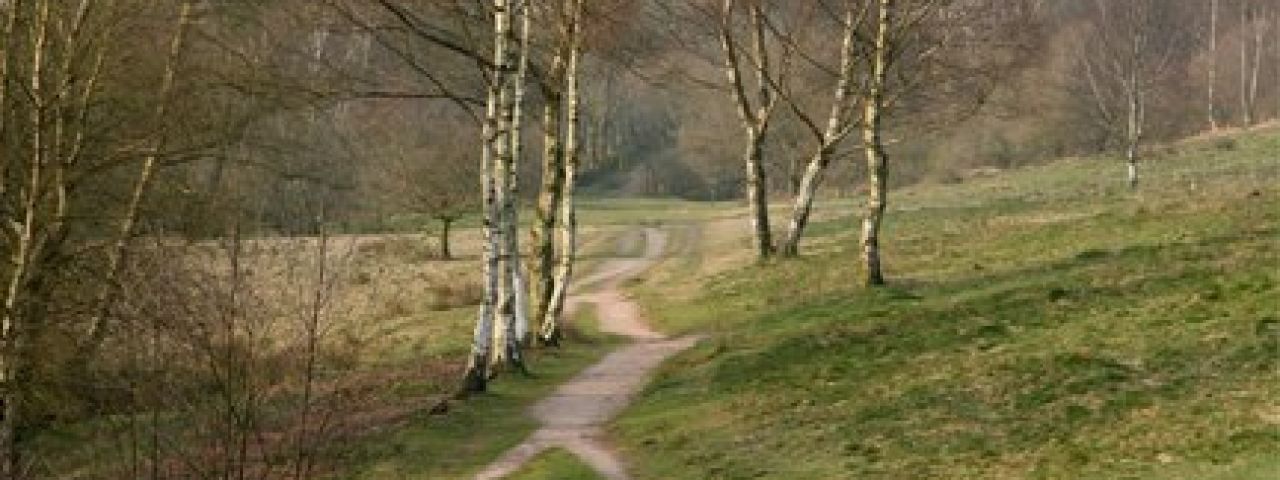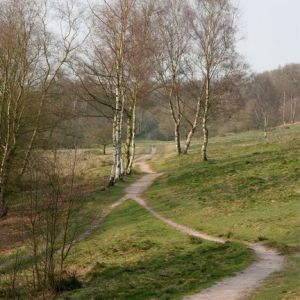National Trust - Downs Banks
Sightseeing attraction | Stone | England | United Kingdom
Visit nature reserve in Staffordshire
National Trust - Downs Banks: A Natural Paradise in Stone, England
Explore hiking trails in Downs Banks
Downs Banks, a beautiful nature reserve near Stone in Staffordshire, is owned by the National Trust and offers visitors an idyllic landscape with gentle hills, wide meadows, and picturesque hiking trails. This untouched piece of nature is a popular destination for walkers, hikers, and nature lovers looking for a peaceful escape from the hectic everyday life.
Panoramic viewpoint at National Trust
Landscape and Nature
The area of Downs Banks is characterized by a diverse and varied landscape. Gentle hills provide spectacular views over Staffordshire and the surrounding rural areas. Dense forests, open heathlands, and babbling brooks traverse the terrain, making every visit a unique experience.
Wildlife and plants in Downs Banks
One of the main attractions of the reserve is the small yet picturesque Downs Banks Brook, a clear stream meandering through the landscape and providing a refreshing backdrop for walkers on hot days. Along the banks, ancient trees and numerous plant species grow, providing a home for birds, insects, and other wildlife.
Recreational activities in nature reserve
Hiking and Nature Recreation
Downs Banks is known for its well-maintained hiking trails that stretch throughout the reserve. The trails are suitable for all ages and fitness levels, from short walks to longer hikes leading through hilly and varied landscapes.
A special highlight is the panoramic viewpoint, from which visitors can enjoy impressive views of the Trent Valley and the Potteries area on clear days. This point is marked by an impressive sundial sculpture, reminding visitors of the natural beauty and history of the place.
In addition to the hiking trails, there are numerous benches and rest areas inviting visitors to take a relaxing break. Here, one can enjoy the tranquility of nature, breathe in the fresh air, and observe the diverse wildlife.
Wildlife and Plant Life
The nature reserve is home to a wide variety of wildlife and plant species. Birds such as buzzards, woodpeckers, and songbirds are frequently seen, while colorful butterflies and dragonflies populate the meadows and hedges in the warmer months.
The landscape is particularly impressive in spring and summer, when numerous wildflowers bloom and the heathlands shine in vibrant colors. Ancient oaks and beech trees provide shade along the hiking trails and contribute to the unique atmosphere of this protected natural space.
Historical Significance and Connection to the National Trust
Downs Banks has a long history and has been used as pastureland and for agricultural purposes in earlier centuries. Today, the area belongs to the National Trust, which is dedicated to protecting and preserving this valuable natural landscape.
Thanks to the work of the National Trust, numerous measures have been taken to preserve the ecological diversity of the area while providing visitors with sustainable access to nature. Regular maintenance ensures that paths are kept in good condition and that the flora and fauna can thrive undisturbed.
Activities for Visitors
In addition to hiking and nature observation, there are various recreational activities at Downs Banks:
- Picnicking: The expansive meadows and woodland clearings are perfect places for a relaxed picnic in the midst of nature.
- Photography: The varied landscape offers countless photo opportunities, especially at sunrise or sunset.
- Dog walking: The area is a popular spot for dog owners, as the extensive paths provide plenty of room to explore.
- Guided tours: Occasionally, guided walks and nature hikes are offered by the National Trust, providing interesting insights into the history and ecology of the area.
Seasonal Experiences
Downs Banks offers a special atmosphere in every season:
- Spring: The meadows are dotted with colorful wildflowers, while birds nest in the trees and fill the air with song.
- Summer: The lush vegetation provides shade, and butterflies and bees are everywhere to be seen.
- Autumn: The leaves turn into warm red and gold tones, and the reserve becomes a dreamy place for walks.
- Winter: The bare trees and frost-covered meadows give the landscape a quiet, almost mystical beauty.




















































































































































































































